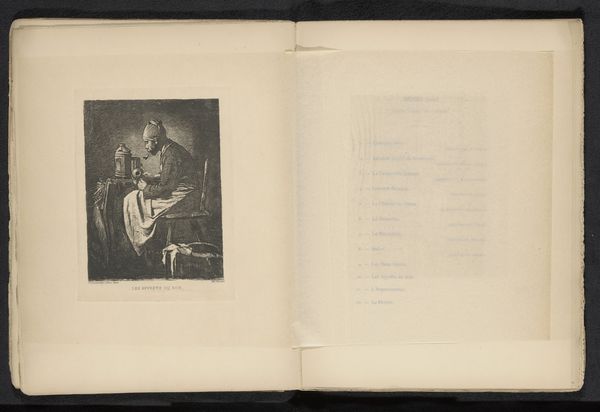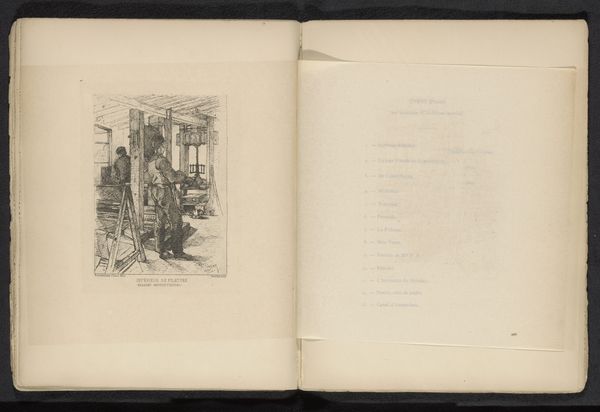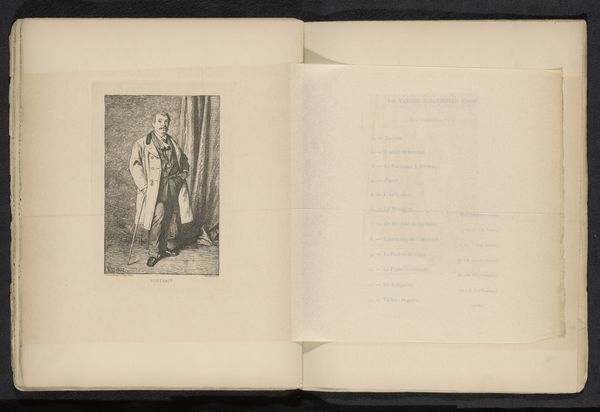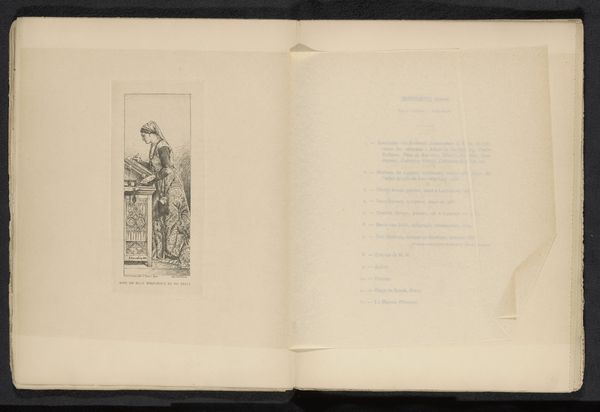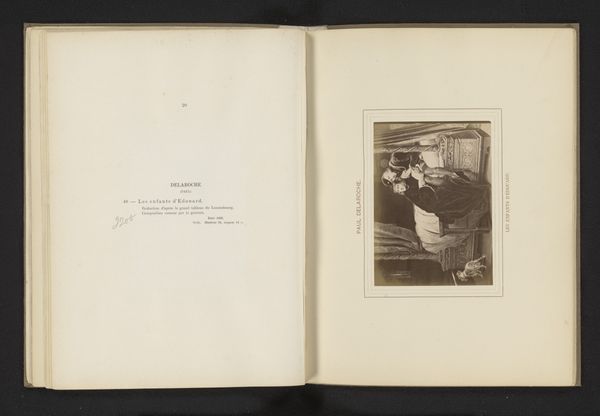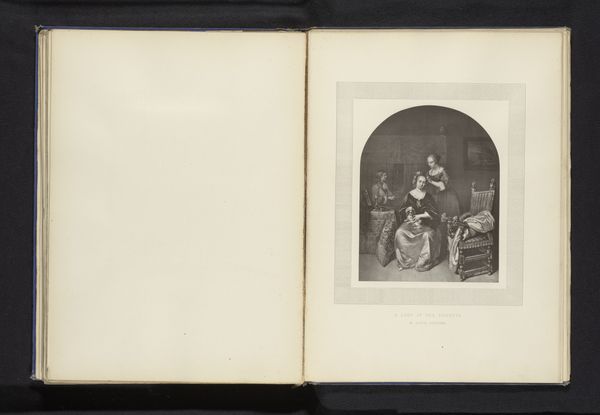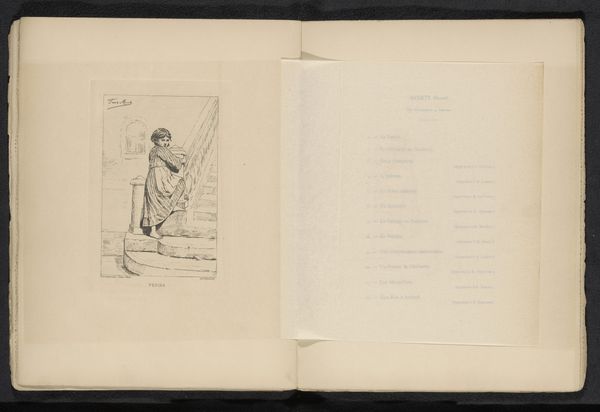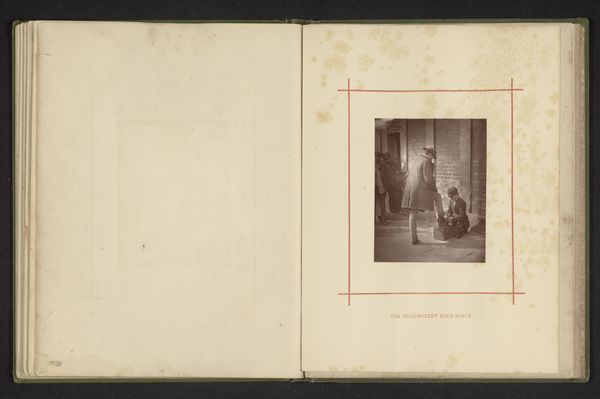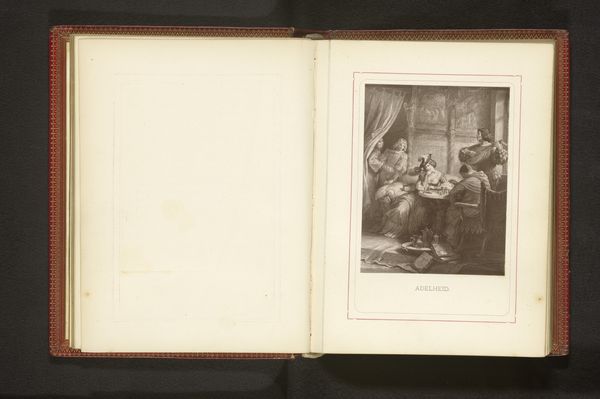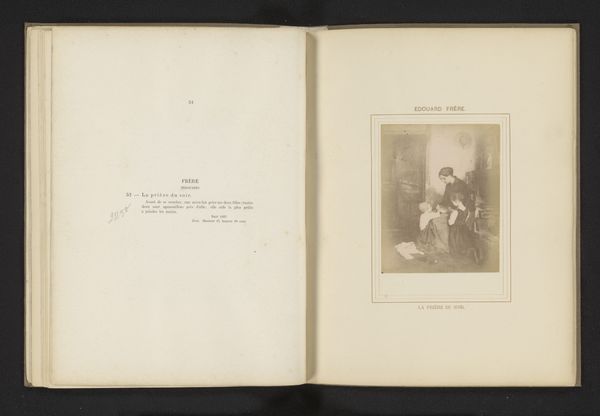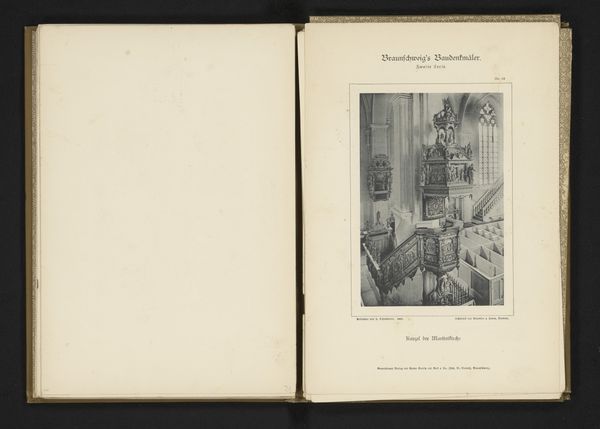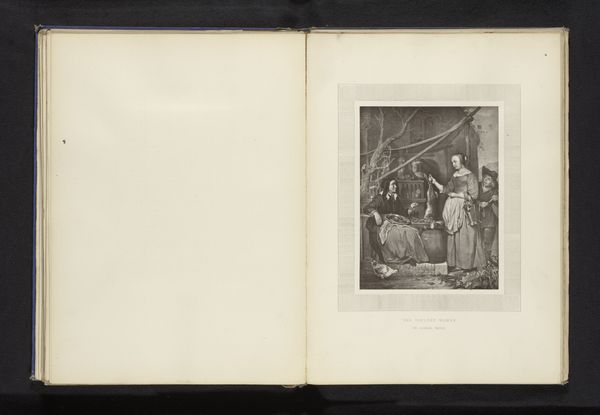
Reproductie van een tekening van een schilder die zijn werk aan iemand toont door Eugène van Gelder before 1883
0:00
0:00
drawing, paper, ink
#
drawing
#
aged paper
#
homemade paper
#
narrative-art
#
paperlike
#
sketch book
#
hand drawn type
#
paper
#
personal sketchbook
#
ink
#
hand-drawn typeface
#
thick font
#
sketchbook drawing
#
genre-painting
#
academic-art
#
sketchbook art
Dimensions: height 162 mm, width 120 mm
Copyright: Rijks Museum: Open Domain
Editor: This is a reproduction of a drawing, before 1883, by Eugène van Gelder, entitled "Reproductie van een tekening van een schilder die zijn werk aan iemand toont" - or, roughly, "Reproduction of a Drawing of a Painter Showing his Work to Someone". It looks like a glimpse into a 19th-century artist’s studio. The social dynamic between the figures is really interesting. What strikes you most about this scene? Curator: Well, the seemingly mundane subject matter – a painter and a potential patron – is itself telling. Genre scenes like this gained popularity alongside the rise of a middle class with disposable income and an interest in art as a commodity. Van Gelder depicts not just art-making, but art's entanglement with economics and social status. Notice the top hat on the visitor. Does this imply a certain socio-economic standing, and therefore influence the artist? Editor: Absolutely! It’s almost as if the drawing stages the power dynamic. Do you think this was commentary or just observation? Curator: I suspect it's both. Van Gelder, like many artists of his time, was likely navigating similar interactions. Representing this scene makes it public. Was it social commentary? Probably. Do we really ever know how intentional artists were? No. The composition frames the act of creation and its reception within a broader social narrative, perhaps subtly questioning the motives of both parties involved in the art market. Do you think that a critical portrayal can reveal inherent prejudices? Editor: Definitely food for thought. Thinking about it this way, it makes me wonder about the role of artists then, and now, and their relationship with patrons. It's not *just* art, it’s the whole context around it. Curator: Exactly! And that is one way of analyzing art, after all: art and its entanglement. Thanks for being here today! Editor: Thank you, it's always eye-opening talking to you.
Comments
No comments
Be the first to comment and join the conversation on the ultimate creative platform.
